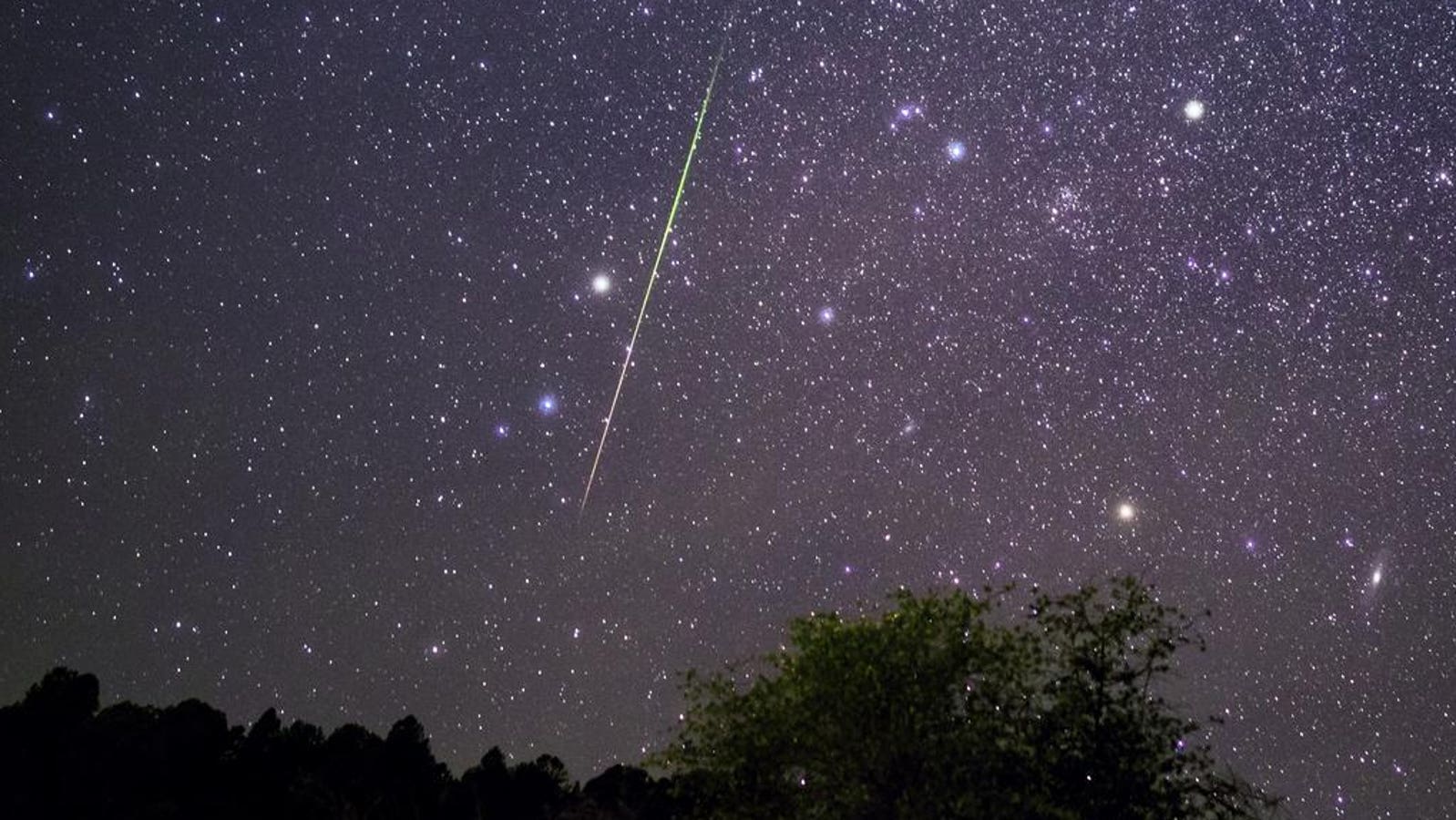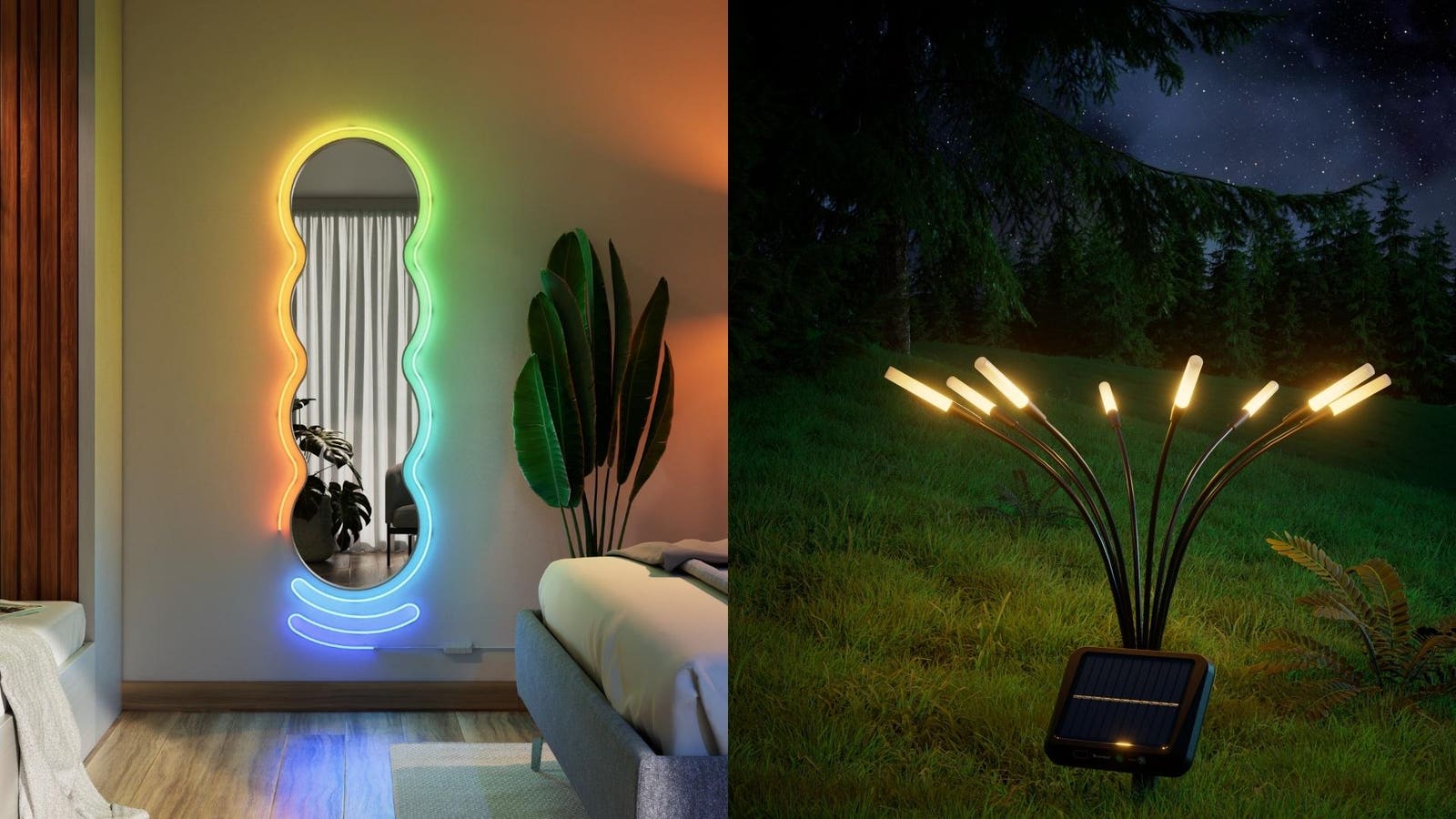Bright meteor streaking across the night sky above Payson, Arizona.
getty
When is the Perseid meteor shower? Happening right now — and peaking this week — the fastest and brightest meteor shower of the year will likely underwhelm.
“The Perseid meteor shower is active between Jul. 17 and Aug. 24,” said Dr Shyam Balaji, theoretical physicist at King’s College London, in an email. “It peaks on Aug. 12, but the light from the full moon might make meteors harder to spot that night.” Harder, but not impossible.
Here’s everything you need to know about — and how and when to get the best view of — the Perseid meteor shower this week.
Peak Night Is August 12–13 — But Moonlight Will Be a Factor
On the peak night, Aug. 12–13, a bright gibbous moon — about 84% lit and rising just as it starts to get dark — will vastly reduce the visibility of “shooting stars.” “The light from the full moon might make meteors harder to spot that night,” said Balaji.
The best chance may be just after sunset and before moonrise, when the sky is still dark, on Aug. 12 — but it’s a narrow window.
Expect About 5-10 ‘Shooting Stars’ Per Hour On The Peak Night
Although the Perseids can see about 75 “shooting stars” per hour during their peak night, this year observers might spot only five to 10 meteors per hour. That’s the huge impact of a bright gibbous moon.
“The Perseid meteor shower is caused by the Earth travelling through the debris left by a comet called Swift-Tuttle,” said Balaji. “The debris falls through the Earth’s atmosphere, and as it burns up, you get the meteor shower display.”
Find An Open Space With A Clear View
Although strong moonlight means there’s no point in escaping to dark skies for the Perseids this year, you still need to think about your observing location. “The key would be to find an open space with a clear view of as much of the sky as possible, since meteors can appear anywhere,” said Dr. Qicheng Zhang, astronomer at Lowell Observatory in Flagstaff, Arizona, in an email. He adds that smoke and smog can also make a noticeable difference.
The Peak Night Is Still Worth Watching Despite the Moon
Although the Perseid meteor shower will be marred by moonlight, it can still be an astronomical highlight for stargazers. That’s because some of the brighter “shooting stars” — called fireballs — will still be visible to those with lots of patience.
The best chance may be just after sunset and before moonrise, when the sky is still dark, on Aug. 12 — but it’s a narrow window.
There may be reasons to look for Perseids in a darker sky, but there’s still likely to be a visible uptick in rates around the peak night. “The Perseids in the middle of the month are still likely to produce the most visible meteors despite the moon,” said Zhang.
You Can Take Evasive Action To Beat The Strong Moonlight
There’s not much you can do about moonlight interrupting the peak of the Perseid meteor shower, but you can lessen its impact by keeping the moon behind you and, better still, watching from somewhere in shadow.
However, be careful that the obstruction you use to block the moon doesn’t also block too much of the night sky. That’s likely to be a bigger problem the higher the moon rises into the sky after midnight.
The Nights Following The Peak Are Also Worth Being Outside For
The nights immediately afterwards are also worth being outside for looking for “shooting stars.”
“The moon rises slightly later each night around the time of the Perseids peak, giving a slightly longer moonless window for later nights,” said Zhang. “However, typically, the meteor rate drops off substantially from the peak — one would probably still see more meteors on the peak night than afterward, all else equal.”
There Could Be A Sudden Outburst
Sudden, unpredictable outbursts could increase that number, but they’re rare and difficult to forecast. “Outbursts are notoriously hard to predict since they require us to know precisely how the parent comet responsible for the meteors was behaving centuries ago, long before astronomers were observing it in any detail,” said Zhang. “Strong outbursts in meteor activity may last only a few hours, and because they’re unpredictable in time, require either a lot of luck or watching for many hours to have a reasonable chance of catching.”
The Perseid meteor shower is caused by the Earth travelling through the debris left by comet Swift-Tuttle.
Look To The North-East For The Best Chance
“Shooting stars” can appear anywhere in the night sky at any time. However, there is a radiant point, a specific location in the night sky from which the meteors appear to originate. “The best place to view the Perseid meteor shower is in the Northeast near the constellation Perseus,” said Balaji. “While you can look at the whole sky and are likely to see a meteor, that’s the target location.”
The brightly lit moon might upset your view of the Perseid meteor shower in 2025, but it will simultaneously create a rather beautiful sight. Look alongside the moon as it rises in the east — albeit uncomfortably near the Perseids’ radiant point — and you’ll see the planet Saturn, close to looking its biggest, brightest and best in 2025.
Wishing you clear skies and wide eyes.









